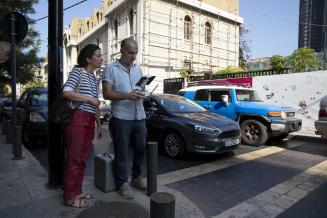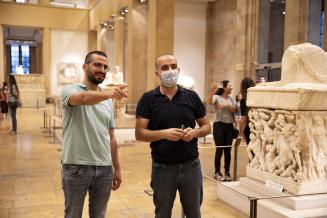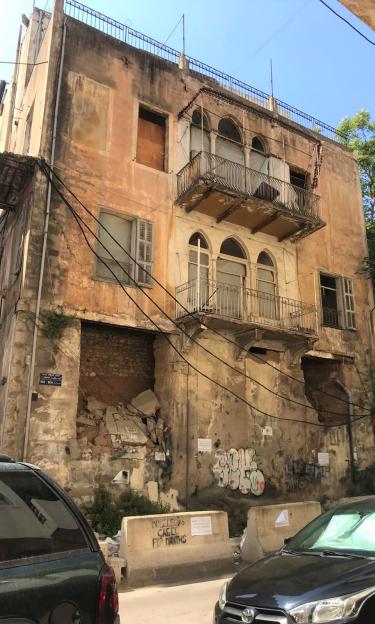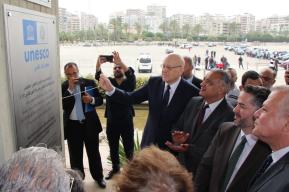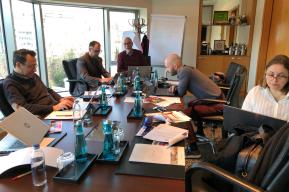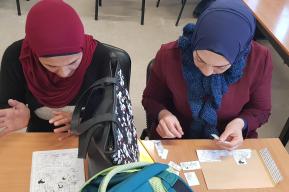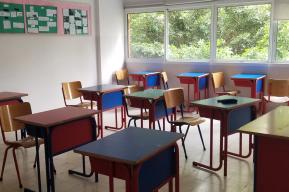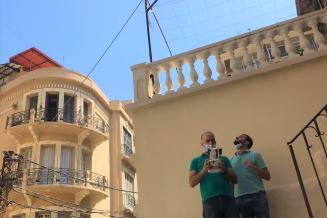
A very unusual maneuver this morning in an alley in Mar Mikhaël, in the heart of the Lebanese capital. Two young men holding a remote control are writing down notes while operating a drone, which is flying over the urban area marked by the usual comings and goings of the passers-by of Beirut. These are Joe Kallas, a consultant architect restorer at UNESCO Beirut, and Salim Germanos, an analyst at the Directorate General of Antiquities (DGA) in Lebanon, who are both completing a very particular exercise: photogrammetry. Their activity is part of a support project provided to DGA specialists by UNESCO and its Emergency Heritage Fund, through training on this technique, which is of capital importance for the conservation of heritage.
“Photogrammetry is a technique that allows us to create 3-dimensional models of areas that we would like to preserve,” explains Joe Kallas. This is done from images taken at a certain altitude and in a certain way. We do this training for members of the DGA in areas of Beirut but also at the Rachid Karami International Fair in Tripoli, in North Lebanon. This will help the Lebanese state create 3D models of the sites and assets to be preserved, and this data can be used in any rehabilitation or conservation projects subsequently. »
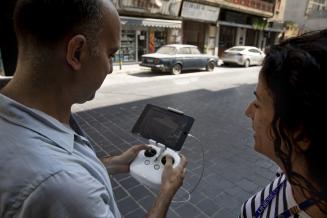
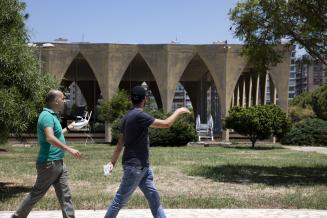
Back in the premises of the DGA, in the building housing the National Museum of Beirut, Salim Germanos analyzes the images taken using special software which allows him to reconstruct urban areas in 3 dimensions. “This training is directly aimed at our daily work within the DGA,” says Salim. Our only concern is to preserve artifacts, cultural heritage buildings, and archaeological sites. »
Created in 1966, the General Directorate of Antiquities has depended on the Ministry of Culture since 1993. It deals in particular with archaeological monuments and built heritage, and is responsible for surveying sites, landmarks, monuments and buildings of archaeological, scientific, or artistic. This administration is also responsible for registrations in the general inventory of antiquities, lists of recognized or classified cultural property, archaeological excavations but also the management and conservation of movable archaeological property. As Lebanon collapses under an unprecedented economic and financial crisis, intensified by the pandemic and the explosions at the port of Beirut in 2020, the DGA, like many public administrations, finds itself unable to carry out its mission due to a lack of means. The staff is forced to limit their operations, but also their participation in trainings which are nevertheless necessary.
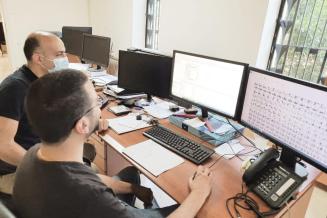
“As the DGA is the entity responsible for the protection and preservation of Lebanon's cultural heritage, it was only natural that the Emergency Heritage Fund financed this training for the DGA on photogrammetry, as part of the LiBeirut initiative, explains Elena Constantinou, Culture Program Specialist at UNESCO Beirut. This technique is innovative and it is also the one we used to create a 3D model of the city of Beirut after the port explosion aimed at helping to preserve damaged urban areas. In these difficult times that Lebanon is going through, UNESCO intends to keep the country's rich culture within the recovery efforts, as its value is inestimable for the Lebanese people and for the world. Cultural heritage is a legacy left by our ancestors, and it is our duty to preserve it for future generations. »
This activity was supported by the UNESCO Heritage Emergency Fund. We would like to thank its donors: the Qatar Fund for Development, the Kingdom of Norway, the French Republic, the Government of Canada, the Principality of Monaco, ANA Holdings INC, the Republic of Estonia, the Kingdom of the Netherlands , the Grand Duchy of Luxembourg, the Principality of Andorra, the Slovak Republic, and the Republic of Serbia.
